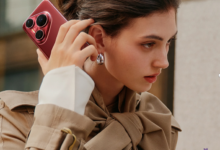Aesthetic:2pk6l0qbry0= Color Palette

The Aesthetic:2pk6l0qbry0= Color Palette presents a compelling opportunity for designers seeking to evoke specific emotional responses through color. By examining the key colors within this palette and their inherent meanings, one can unlock strategies for effective visual communication. This discussion will explore the nuanced applications of these colors across various design projects, revealing how thoughtful integration can transform an ordinary composition into a powerful narrative. However, the potential impact of this palette extends beyond mere aesthetics, prompting a closer look at its psychological implications in design.
Overview of the Color Palette
The harmony and balance inherent in a well-constructed color palette serve as the foundation for effective visual communication.
A thoughtfully curated palette not only enhances Aesthetic:2pk6l0qbry0= Color Palette appeal but also evokes emotional impact, engaging audiences on a deeper level.
Furthermore, the cultural significance of colors can influence perception, reflecting societal values and historical contexts, ultimately empowering creators to convey messages that resonate with diverse audiences.
Read more: Aesthetic:2kdkmc_Pzvi= Pastel Goth
Key Colors and Their Meanings
Colors possess intrinsic meanings that extend beyond their visual appeal, playing a crucial role in shaping perceptions and emotional responses.
Each hue carries its own color symbolism; for instance, blue evokes tranquility and trust, while red signifies passion and urgency.
Understanding these associations allows for a deeper comprehension of their emotional impact, enabling individuals to harness colors effectively in various contexts.
Application in Design Projects
Incorporating a well-thought-out color palette in design projects can significantly enhance the overall aesthetic and functionality of the final product.
By understanding color psychology, designers can evoke specific emotions and responses, fostering a deeper connection with the audience.
Additionally, achieving visual harmony through strategic color combinations allows for a cohesive and engaging experience, ultimately elevating the effectiveness of the design.

Tips for Using the Palette
Effective application of a color palette requires not only an understanding of theory but also practical strategies for implementation.
To achieve color harmony, experiment with various combinations while ensuring visual balance. Utilize contrasting shades to highlight focal elements, and consider the emotional impact of colors.
Always assess the overall composition, allowing for freedom in creativity while adhering to these foundational principles for effective design outcomes.
Read more: Aesthetic:2oqhm3wwmfq= Melanie Martinez
Conclusion
The Aesthetic:2pk6l0qbry0= Color Palette serves as a modern-day brush for creators, reminiscent of the Impressionist movement’s focus on emotion and perception. By integrating shades that symbolize tranquility and passion, this palette transcends mere visuals, inviting audiences into a realm of deeper engagement. Its strategic applications in design projects exemplify the power of color in shaping narratives, ultimately reinforcing the notion that effective visual communication can evoke profound emotional responses, akin to a symphony composed of colors.







